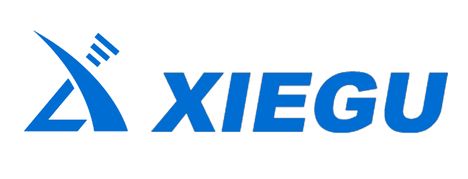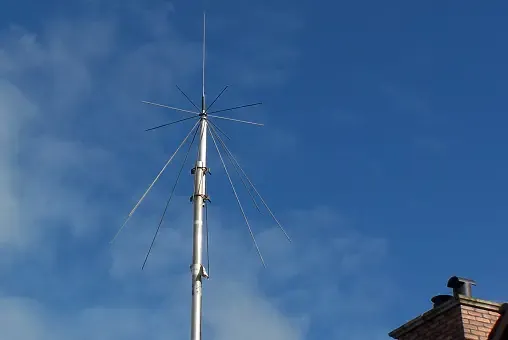
Send Inquiry
What Is the Discone Antenna?
Understanding discone antennas is pivotal for anyone delving into radio communication. These antennas boast expansive coverage, capable of capturing signals across various frequencies, including those used in amateur radio, air traffic control, and public safety communications. In this comprehensive guide, we'll delve into the workings of discone antennas, explore their historical significance, and highlight their advantages over traditional antenna designs.
Understanding the Discone Antenna
Definition and Functionality of Discone Antennas
Discone antennas are characterized by their biconical shape, featuring a disc mounted above a cone. This design allows them to receive signals omnidirectionally, making them versatile for various applications. They excel in capturing signals across a broad range of frequencies, from very high frequency (VHF) to ultra-high frequency (UHF).
Historical Background and Evolution of Discone Antennas
The inception of discone antennas dates back to the latter stages of World War II, initially developed for military aircraft communication. Over time, they have evolved into versatile antennas used in civilian applications, ranging from amateur radio operations to public safety communications.
Comparison with Traditional Antennas
In contrast to traditional antennas, discone antennas offer unparalleled wideband coverage. Their unique design enables them to capture signals across a broader spectrum, making them ideal for users seeking versatile reception capabilities. Unlike traditional antennas, which may require precise orientation for optimal signal reception, discone antennas excel in capturing signals from multiple directions simultaneously.
How Does a Discone Antenna Work?
Detailed Explanation of the Working Principle
At the core of a discone antenna's functionality lies its unique design, comprising a cone and a disc. This configuration enables the antenna to receive signals from a wide range of frequencies omnidirectionally. As electromagnetic waves interact with the antenna's structure, they induce electrical currents, which are then translated into signals for reception.
Differentiating "True" Discone Antennas from Hobbyist Versions
True discone antennas feature a solid metal disc atop a solid metal cone, offering optimal performance across a broad spectrum of frequencies. On the other hand, hobbyist versions often utilize a simpler construction, employing metal rods to create an open cone with a disc placed atop. While hobbyist versions may offer cost-effective alternatives, they may not match the performance of true discone antennas.
Analysis of Omnidirectional and Resonant Properties
Omnidirectionality is a key characteristic of discone antennas, allowing them to capture signals from all directions without the need for precise alignment. This property makes them suitable for various applications where signal reception from multiple directions is necessary. Additionally, discone antennas exhibit resonant properties, efficiently capturing and translating electromagnetic energy into usable signals across a wide frequency range.
Applications of Discone Antennas
UHF and VHF Applications in Amateur Radio and Public Safety
Discone antennas find widespread use in amateur radio operations and public safety communications, particularly in the UHF and VHF frequency bands. Their ability to capture signals from distant sources makes them invaluable tools for radio enthusiasts and emergency responders alike.
Specialized Uses in Radio Astronomy and Geolocation
Beyond terrestrial communications, discone antennas also serve specialized purposes in fields such as radio astronomy and geolocation. Their wideband coverage and omnidirectional reception capabilities make them suitable for capturing faint signals from celestial bodies or tracking changes in the Earth's surface.
Legal and Regulatory Considerations for Antenna Usage
While discone antennas offer versatility and performance, users must adhere to legal and regulatory requirements governing their usage. Depending on the jurisdiction, there may be restrictions on antenna placement, height, and frequency usage. It's essential for users to familiarize themselves with local regulations to ensure compliance and avoid potential penalties or interference issues.
Pros and Cons of Discone Antennas

Advantages
- Wideband Reception Capabilities: Discone antennas excel in capturing signals across a broad spectrum of frequencies, from very high frequency (VHF) to ultra-high frequency (UHF). This wideband coverage ensures that users can access a diverse range of radio transmissions without the need for multiple antennas.
- Optimal Range and Sensitivity to Distant Signals: Due to their omnidirectional nature and resonant properties, discone antennas offer exceptional sensitivity to distant signals. This feature makes them ideal for users seeking to capture transmissions from afar, such as amateur radio operators or emergency responders.
Indoor and Outdoor Compatibility: Discone antennas are versatile enough to be used both indoors and outdoors. While outdoor installations typically offer superior performance due to less obstruction, indoor setups can still provide satisfactory reception, albeit with some signal attenuation.
Disadvantages
- Limitation to Receiving, Not Transmitting: One significant drawback of discone antennas is their inability to transmit signals. They are primarily designed for reception purposes, making them unsuitable for users who require two-way communication capabilities.
- Susceptibility to Interference and Noise: The wideband reception capabilities of discone antennas can sometimes lead to increased susceptibility to interference and noise. Users may experience degraded signal quality, especially in urban environments with high levels of electromagnetic interference.
- Size and Weight Concerns for Installation: Discone antennas tend to be larger and heavier compared to other types of antennas, particularly when designed for optimal performance. This can pose challenges during installation, especially for individuals with limited space or mounting options.
Conclusion
The discone antenna stands as a remarkable innovation in the realm of radio communication, offering wideband coverage, omnidirectional reception, and versatility for various applications. As we've explored its working principles, applications, and pros and cons, it's evident that the discone antenna is a valuable tool for radio enthusiasts, emergency responders, and professionals alike.
For those seeking reliable and high-performance antennas, look no further than Ruixue. With a reputation for quality and innovation, Ruixue antennas are designed to meet the demands of modern communication needs. Whether you're a hobbyist exploring the airwaves or a professional in need of dependable radio equipment, Ruixue antennas deliver exceptional performance and reliability. Unlock the full potential of your radio equipment with Ruixue antennas – your trusted partner in superior reception and transmission.

